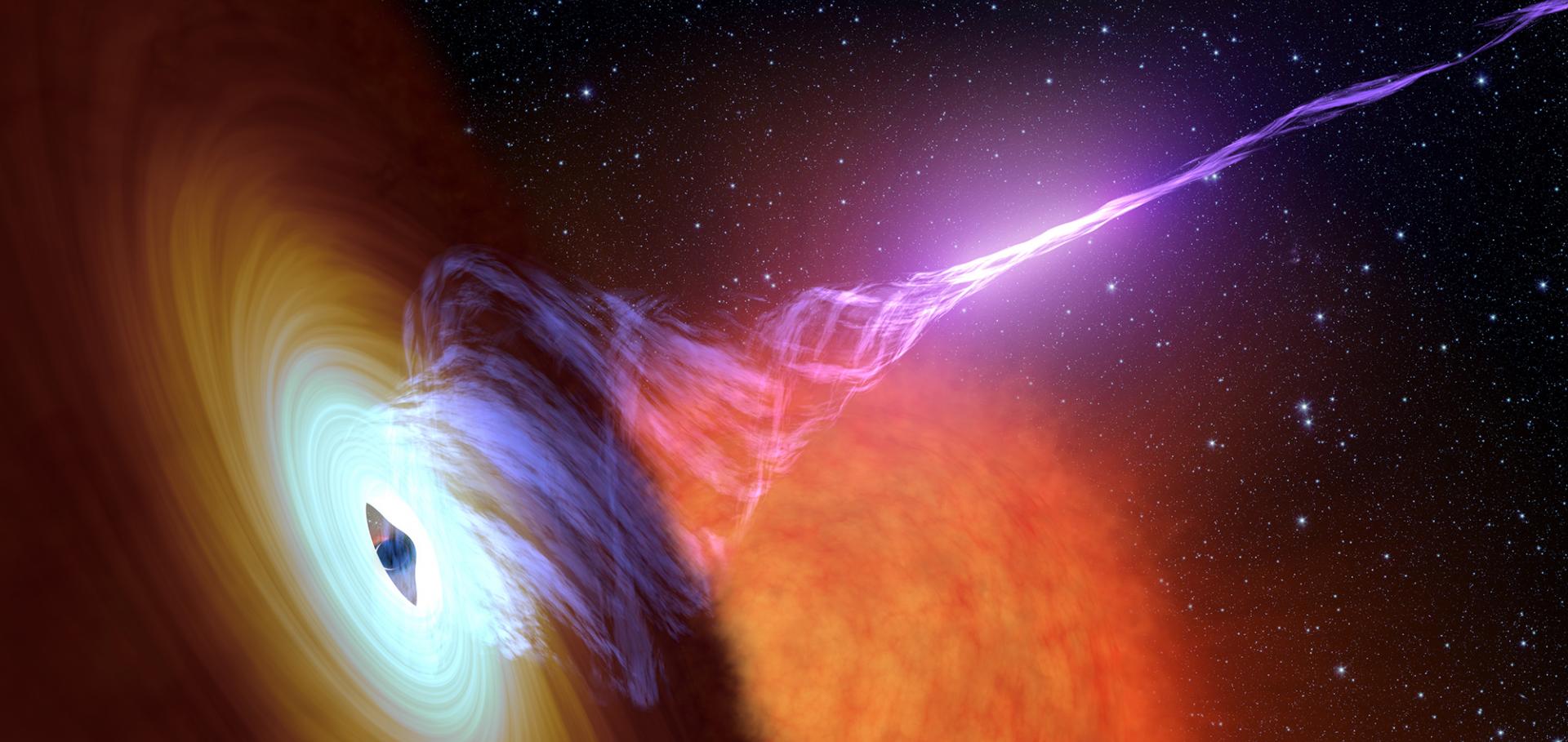Discovery of Carbon Radio Recombination Lines in absorption towards Cygnus~A
(2014)
The low or retrograde spin of the first extragalactic microquasar: implications for Blandford-Znajek powering of jets
(2014)
Discovery of carbon radio recombination lines in absorption towards cygnus A
Monthly Notices of the Royal Astronomical Society 437:4 (2014) 3506-3515
Abstract:
We present the first detection of carbon radio recombination line absorption along the line of sight to Cygnus A. The observations were carried out with the Low Frequency Array in the 33-57MHz range. These low-frequency radio observations provide us with a new line of sight to study the diffuse, neutral gas in our Galaxy. To our knowledge this is the first time that foreground Milky Way recombination line absorption has been observed against a bright extragalactic background source. By stacking 48 carbon α lines in the observed frequency range we detect carbon absorption with a signal-to-noise ratio of about 5. The average carbon absorption has a peak optical depth of 2 × 10-4, a line width of 10 km s-1 and a velocity of +4 kms-1 with respect to the local standard of rest. The associated gas is found to have an electron temperature Te ̃ 110K and density ne ̃ 0.06 cm-3. These properties imply that the observed carbon a absorption likely arises in the cold neutral medium of the Orion arm of the Milky Way. Hydrogen and helium lines were not detected to a 3σ peak optical depth limit of 1.5 × 10-4 for a 4 kms-1 channel width. Radio recombination lineσ aσσociated with Cygnuσ A itself were also searched for, but are not detected. We set a 3σ upper limit of 1.5 ×; 10-4 for the peak optical depth of these lines for a 4 kms-1 channel width. © 2013 The Authors Published by Oxford University Press on behalf of the Royal Astronomical Society.Precise mass and spin measurements for a stellar-mass black hole through X-ray timing: The case of GRO J1655-40
Monthly Notices of the Royal Astronomical Society 437:3 (2014) 2554-2565
Abstract:
We present a systematic analysis of the fast time variability properties of the transient black hole binary GRO J1655-40, based on the complete set of Rossi X-ray Timing Explorer observations.We demonstrate that the frequencies of the quasi-periodic oscillations and of the broad-band noise components and their variations match accurately the strong field general relativistic frequencies of particle motion in the close vicinity of the innermost stable circular orbit, as predicted by the relativistic precession model.We obtain high-precision measurements of the black hole mass [M = (5.31 ± 0.07)M⊙, consistent with the value from optical/NIR observations] and spin (a = 0.290 ± 0.003), through the sole use of X-ray timing. © 2013 The Authors. Published by Oxford University Press on behalf of the Royal Astronomical Society.Synergy between the large synoptic survey telescope and the square kilometre array
Proceedings of Science 9-13-June-2014 (2014)


